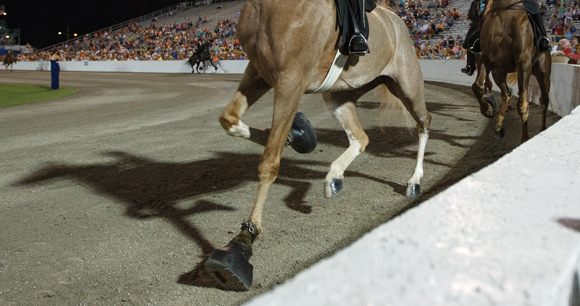The Horse Protection Act (HPA) was enacted in 1970 to clamp down on the scourge of “soring”—the term for a host of abusive practices inflicted upon Tennessee walking horses and related breeds to produce an exaggerated high-stepping gait known as the “big lick” for certain competitions and shows.

Unfortunately, over 50 years later, soring still persists—in large part because of inadequate enforcement and an ineffective self-policing system. The current inspection regime is the quintessential case of the fox guarding the hen house: Although the US Department of Agriculture does some inspections, it largely relies on “designated qualified persons” (DQPs), who are employees of the organizations that host shows and are often exhibitors of Tennessee walking horses themselves, to find evidence of abuse. Not surprisingly, a 2010 USDA inspector general investigation found that this model presents a “clear conflict of interest” and recommended abolishing the DQP program. Unfortunately, the USDA has continued relying on DQPs to inspect horses.
On January 13, the National Academies of Sciences, Engineering and Medicine (NASEM) released a long-awaited report: A Review of Methods for Detecting Soreness in Horses. Among the NASEM’s recommendations were that use of DQPs for inspections be discontinued and that only veterinarians inspect horses at shows for soreness. The report also emphasized the importance of physical exams and manual techniques such as palpation to discern pain and inflammation as evidence of soring. Other recommendations include instituting random drug testing and using thermography—an imaging technique that veterinarians use to detect inflammation—during inspections.
The NASEM report offers yet another promising sign that those trainers and owners who abuse horses are on borrowed time. AWI has long championed the Prevent All Soring Tactics (PAST) Act, which would strengthen the HPA, end the failed system of industry self-policing, ban the use of devices associated with soring, increase penalties, and make illegal the actual soring of a horse. The PAST Act overwhelmingly passed the House of Representatives in 2019, with 333 lawmakers voting in favor of the bill. However, it was not taken up by the Senate.
Similarly, a regulatory route may offer a solution to ending soring. In the waning days of the Obama administration, the USDA moved to establish an HPA rule that would have accomplished the goals of the PAST Act. However, the Trump administration immediately froze the rule. As indicated in the chart on the following page, our analysis of USDA records found that HPA enforcement plummeted under the Trump administration. In fiscal year 2016, for example, the USDA issued 956 warnings for HPA violations; two years later, the number had dropped to zero warnings issued.
Earlier this year, AWI raised the need to reissue the nearly finalized HPA rule with the Biden administration’s transition team. Over 200 members of Congress have written in favor of finalizing it, and—with Secretary Vilsack’s return—we are hopeful that it will be. We will continue working with the administration and federal lawmakers to either finalize the rule or pass the PAST Act so that horses no longer suffer this abuse.